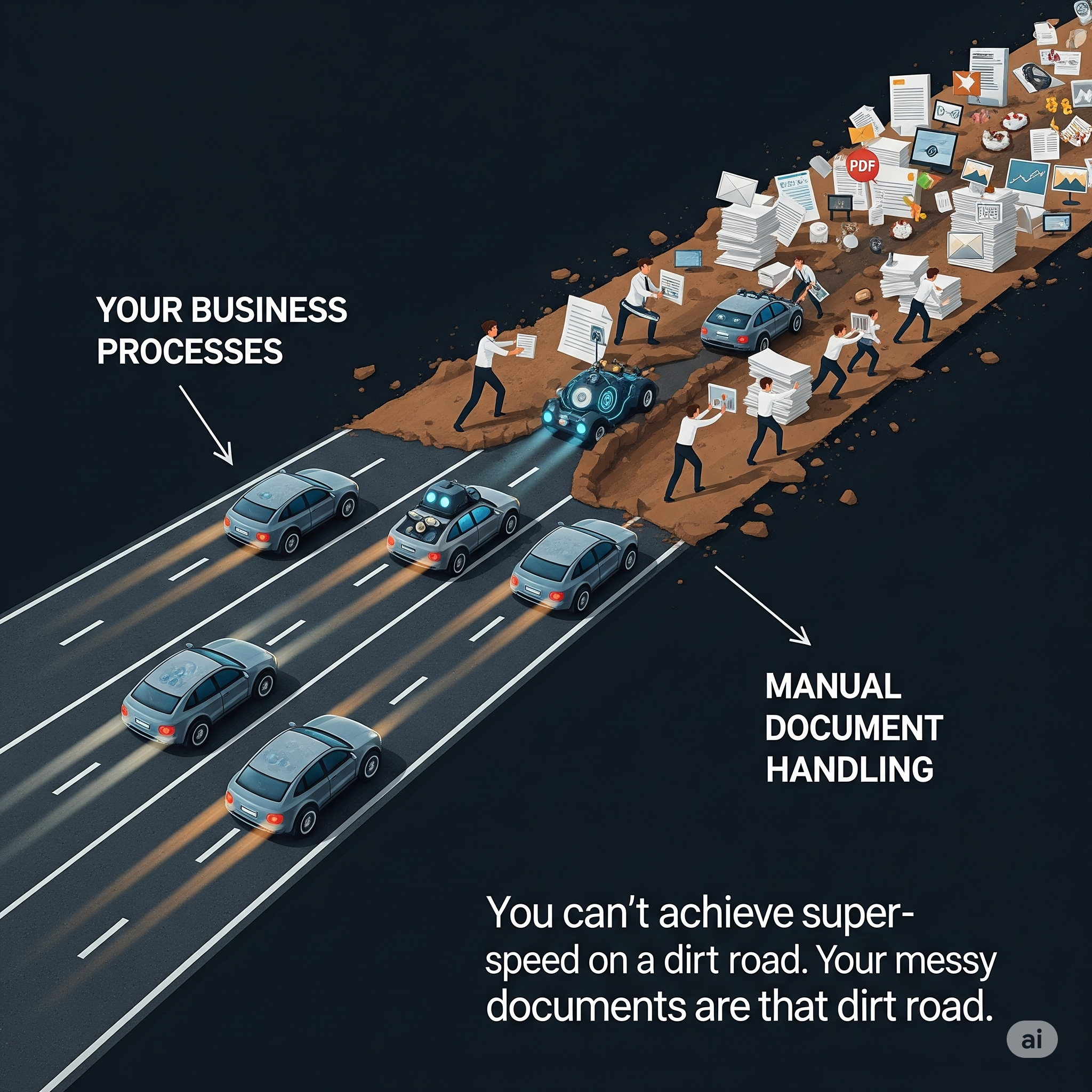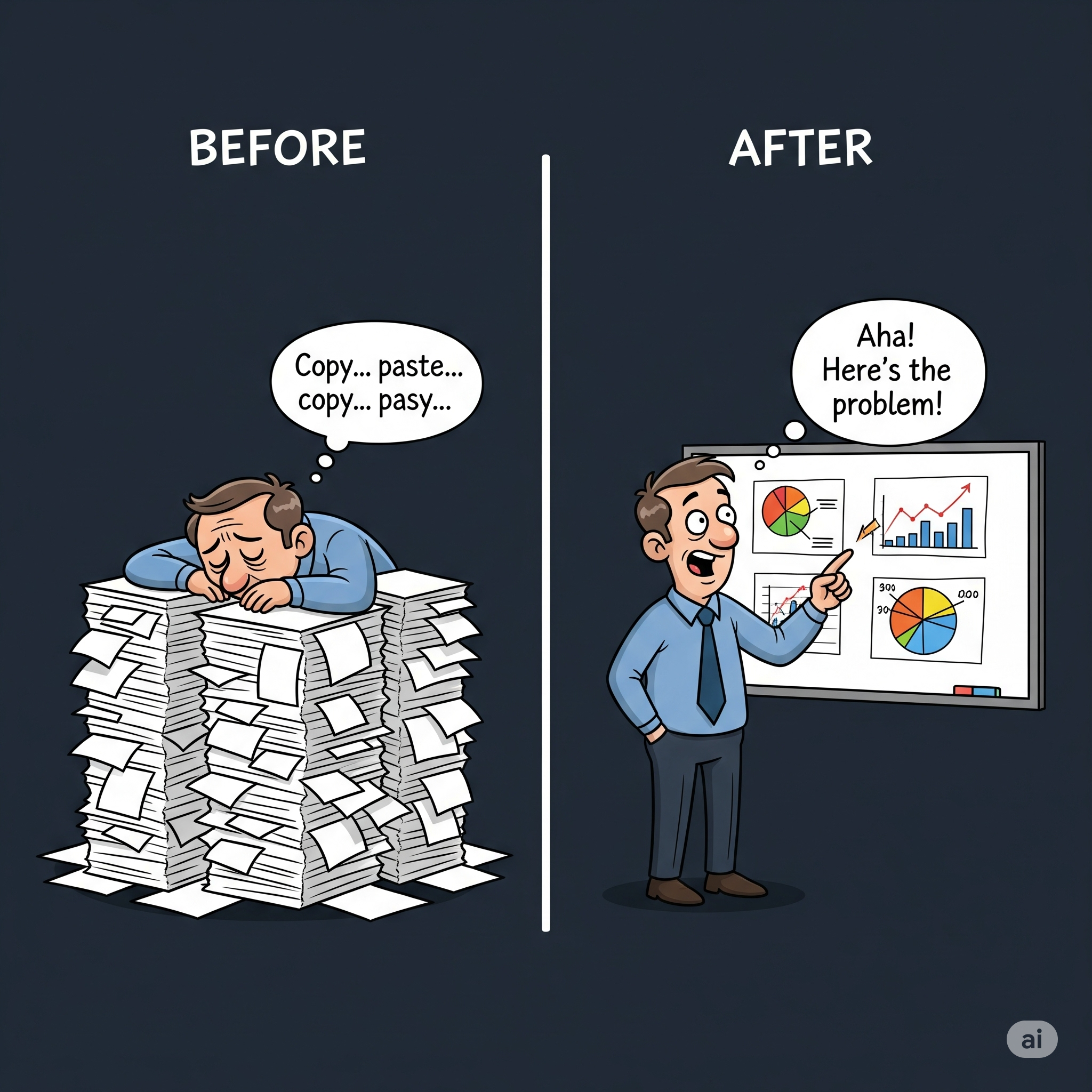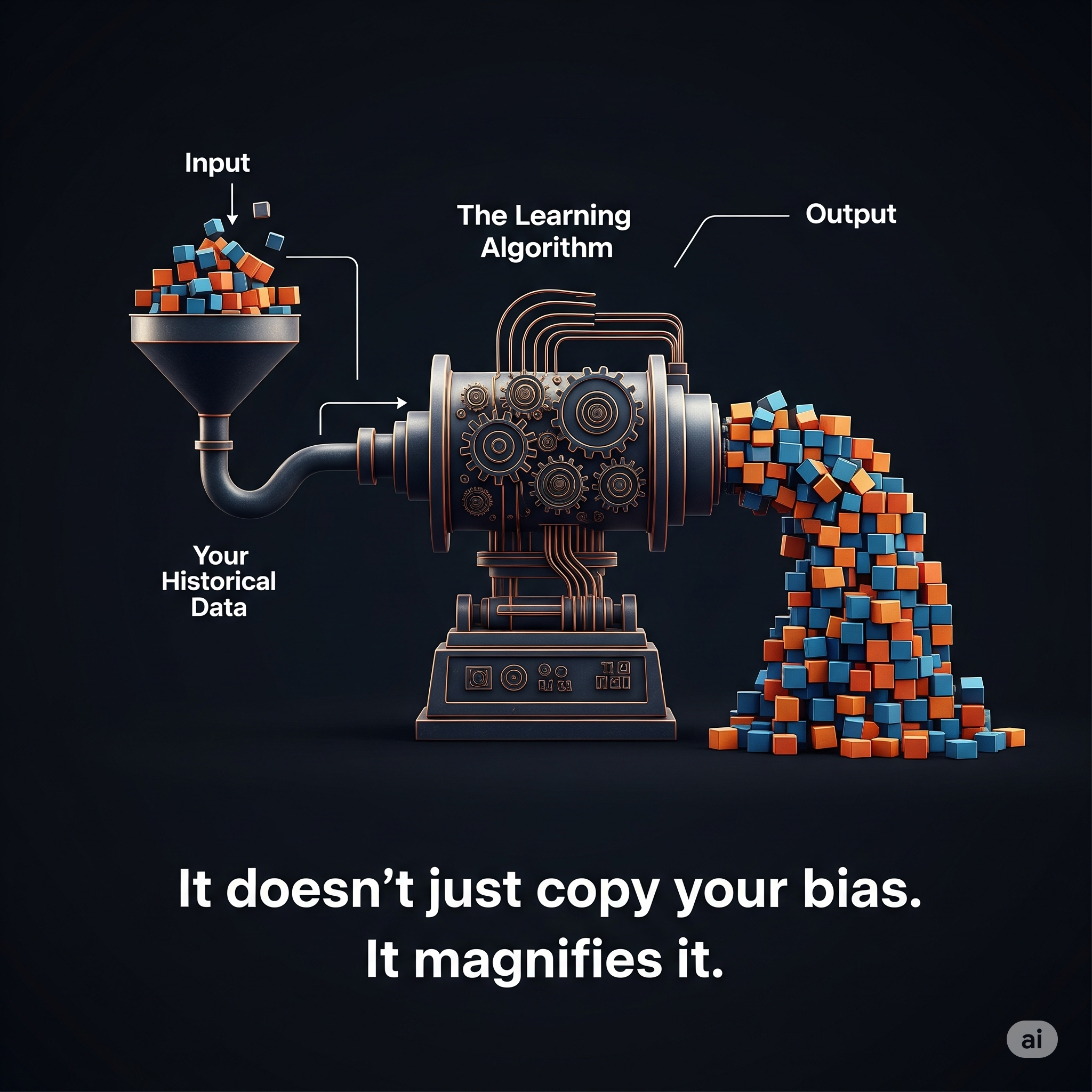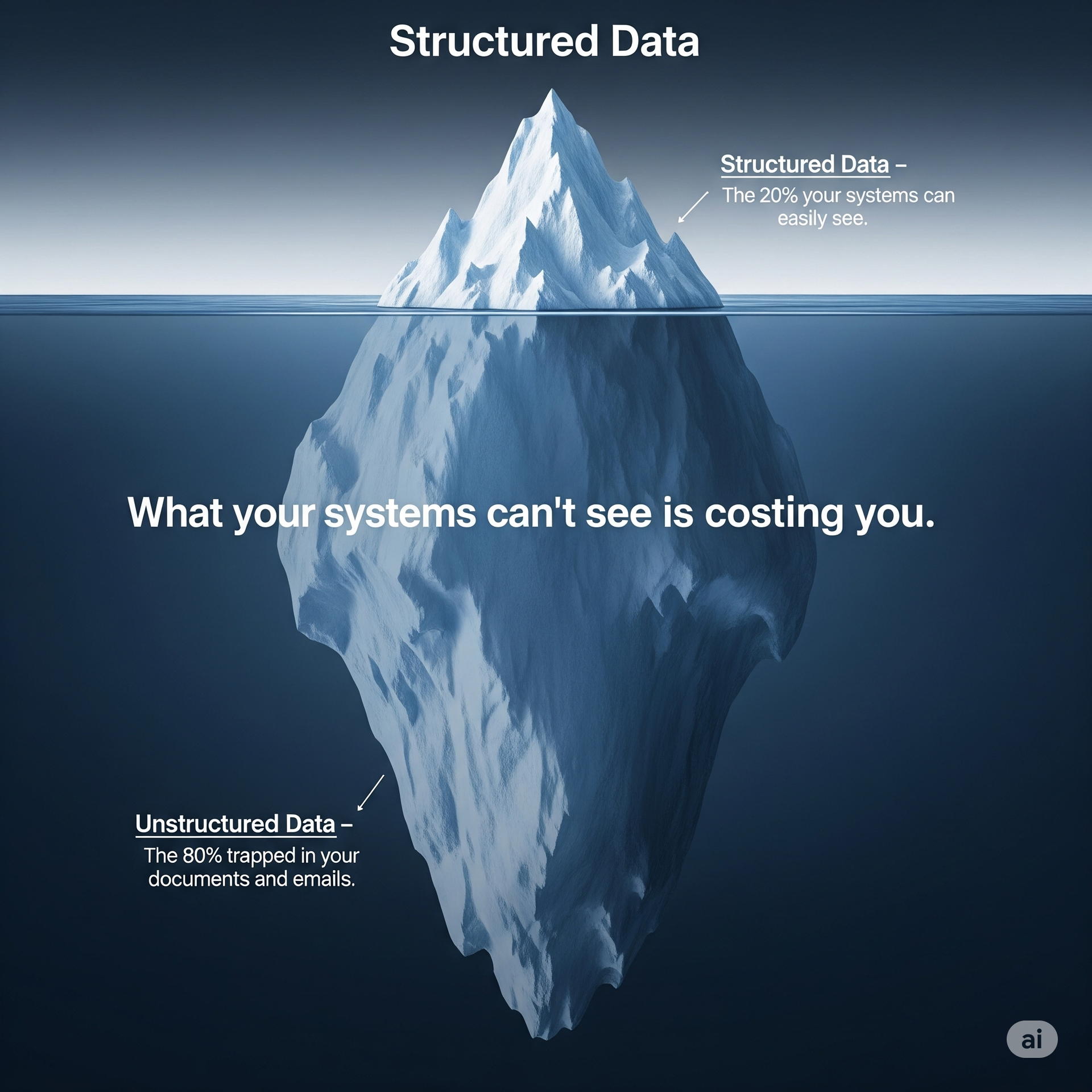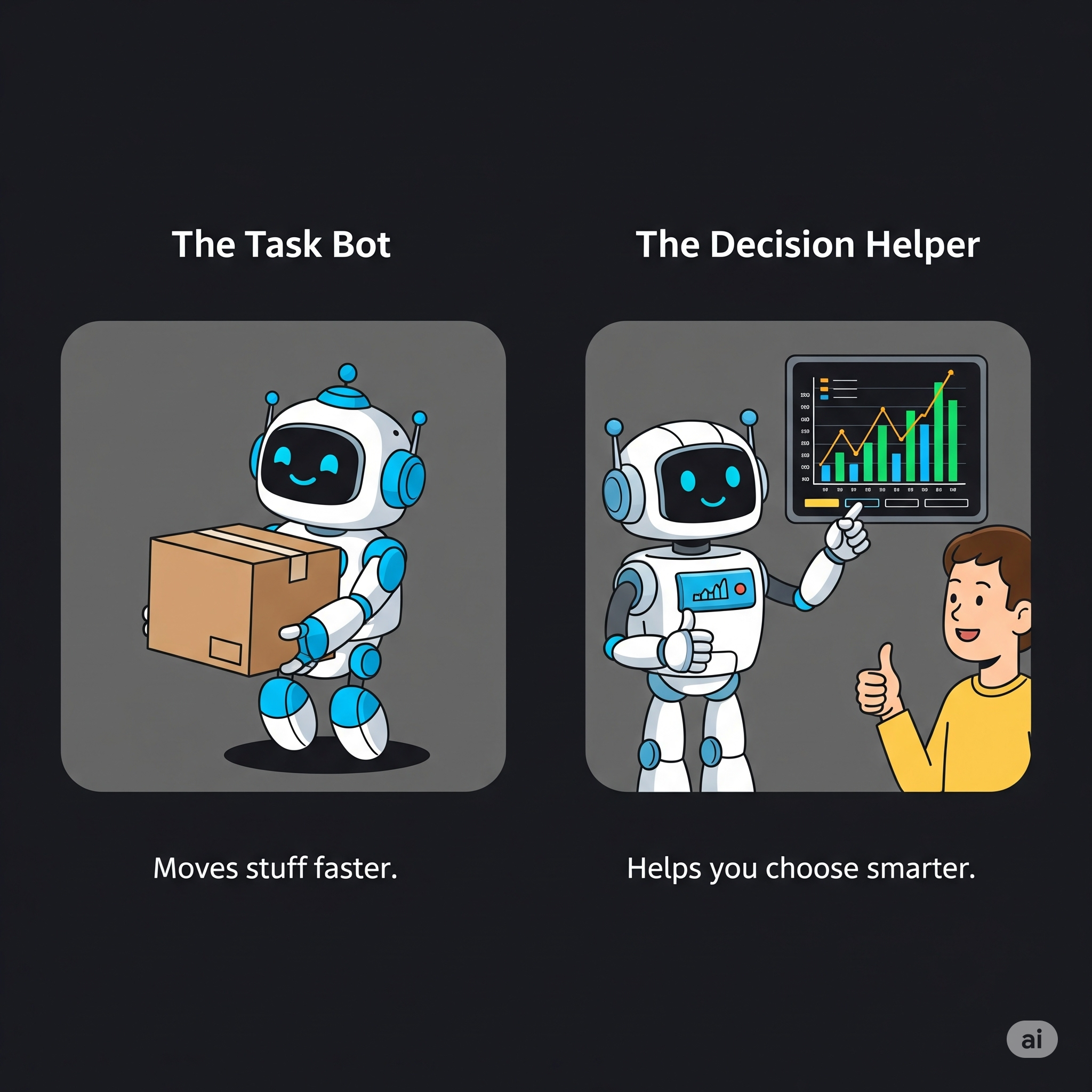We all have these amazing, expensive software systems—our ERPs, our CRMs. We bought them because they promised to make our businesses run like a well-oiled machine. They’re like supercars sitting in the company garage, promising incredible speed and performance.
There’s just one, massive problem. We’re trying to fuel these supercars with sludge.
That sludge is the mountain of documents that our businesses actually run on. The invoices, the contracts, the purchase orders, the customer emails, the new hire forms. It’s a messy, chaotic, and completely unpredictable flow of information. And our fancy, high-tech systems have absolutely no idea how to read it.
This is the great, inconvenient truth of modern business. We’ve built digital highways that can only handle perfect, structured data, but the cargo that needs to travel on them is trapped in messy, unstructured documents. So, we end up creating a massive traffic jam right at the entrance ramp.
The 80% Problem
Here’s a staggering fact: something like 80% of a company’s most important information is locked away in documents and emails. The promises you made in a contract, the details of a customer’s order, the proof you need for an insurance claim—it’s all in there, but your systems can’t see it.
So, you do what everyone else does. You hire people to be human bridges. You pay smart, capable employees to spend their entire day reading words from one screen and typing them into another. You’ve turned your people into biological copy-paste machines.
This isn’t just inefficient; it’s quietly bleeding your company dry.
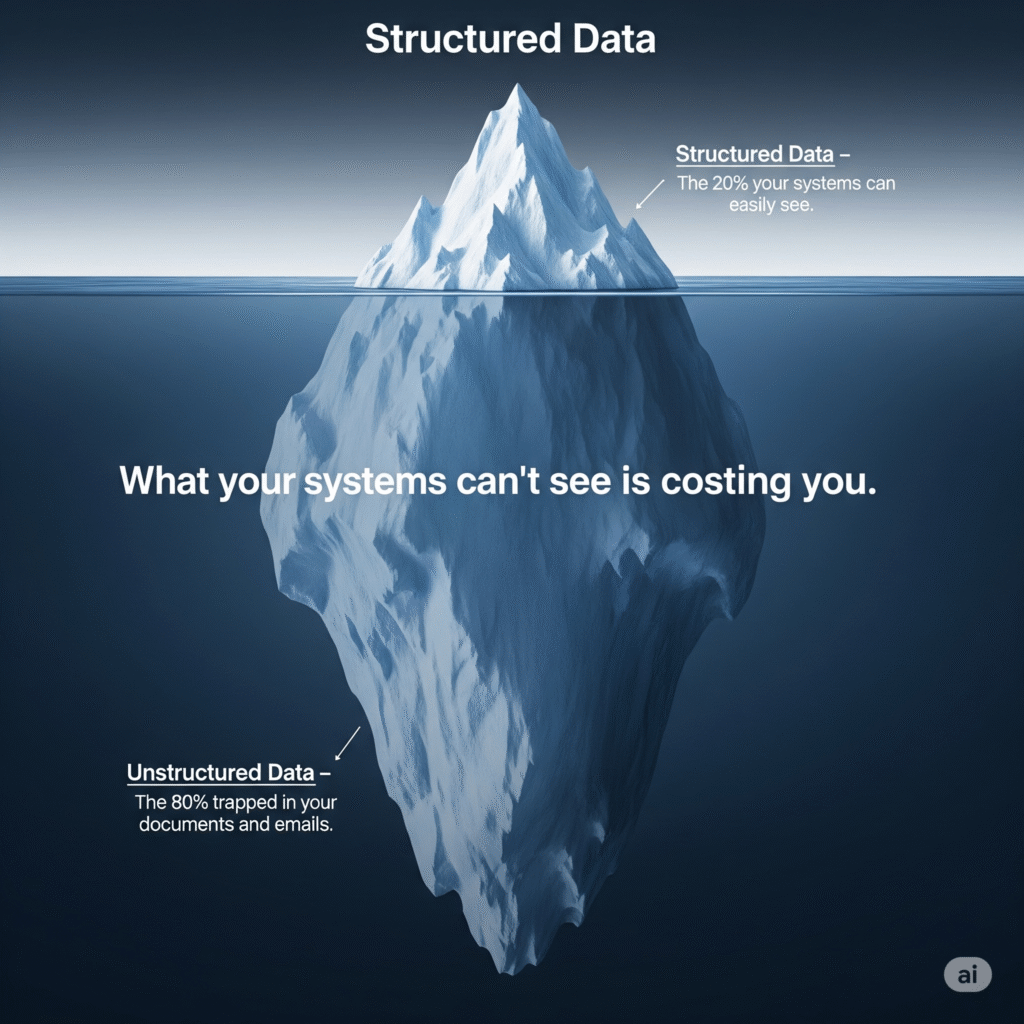
The Real Cost of All That Typing
Using people as a bridge between documents and data comes with huge hidden costs. Think of it as a “Document Tax” you pay every single day.
- The Cost of Dumb Mistakes: When a person types in numbers all day, they’re going to make mistakes. They’ll transpose a couple of digits in an invoice amount, misread a date, or enter something in the wrong box. A simple typo could mean you overpay a supplier by thousands of dollars or miss a critical contract deadline.
- The Cost of Waiting: People are slow. A document can sit in an inbox for a day before anyone even looks at it. This slowness kills deals, frustrates customers waiting for an answer, and means you miss out on early payment discounts with your suppliers.
- The Cost of Wasting Talent: This one is the worst. You didn’t hire smart people to do robotic work. Forcing your skilled team members to do mind-numbing data entry is the fastest way to burn them out. They get bored, they feel undervalued, and they quit. Then you have to spend a fortune hiring and training their replacement, starting the whole sad cycle over again.
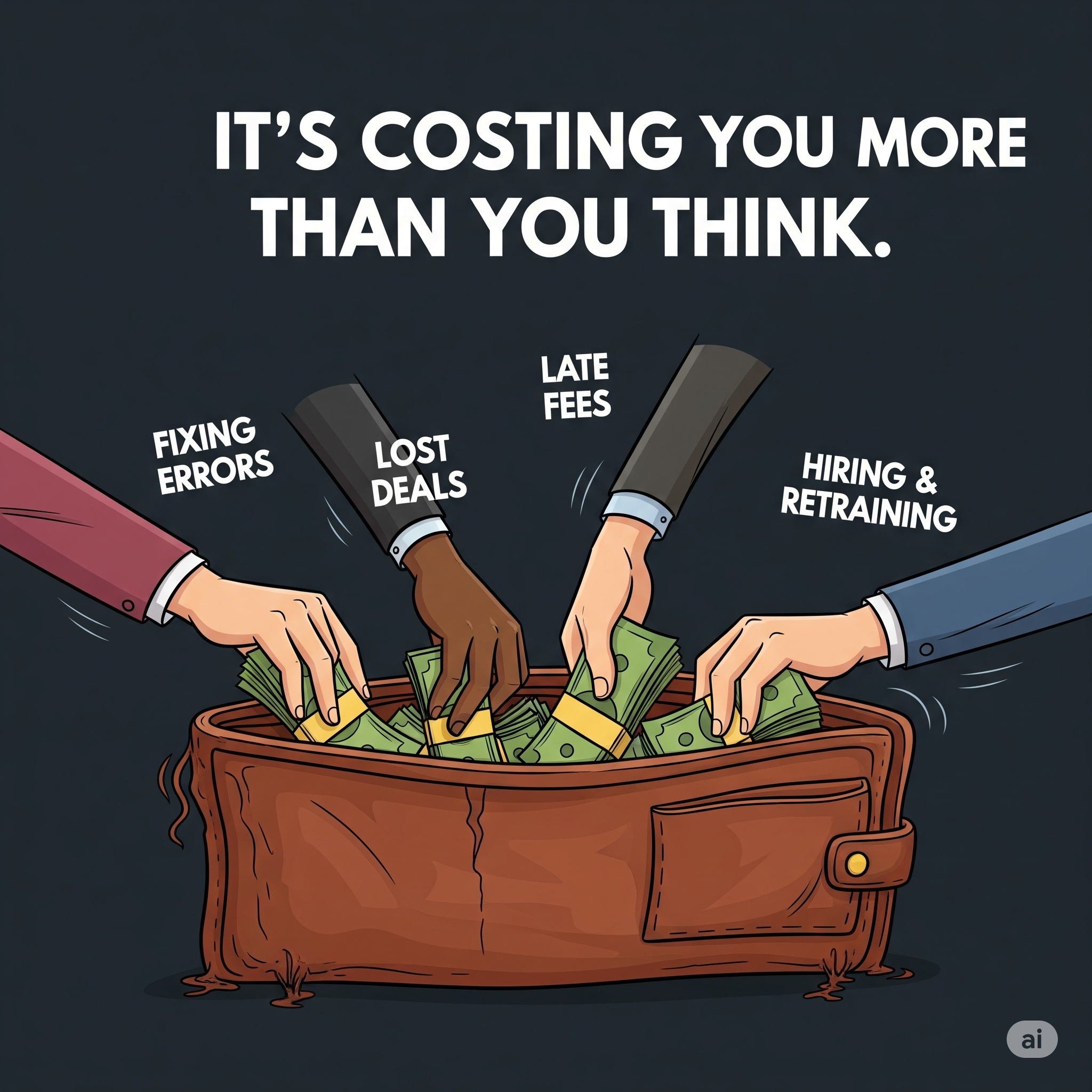
How This Mess Divides Your Company
This problem also builds walls inside your business. Finance has its pile of documents, and Legal has a completely different pile. Operations has another. The information in a contract that Legal reviewed is invisible to the Finance team who has to pay the bills related to it.
You can’t get a clear picture of your own company because all the important details are locked away in different filing cabinets in different departments. You’re flying blind.
But what if you could tear down those walls? What if you had one tool that could read all of your documents, no matter which department they came from?
Suddenly, the information could flow. The terms that Legal negotiated in a contract could automatically show up for the Finance team when they’re processing an invoice from that vendor. The sales team could see a customer’s real-time support history. You’d finally be able to connect the dots.
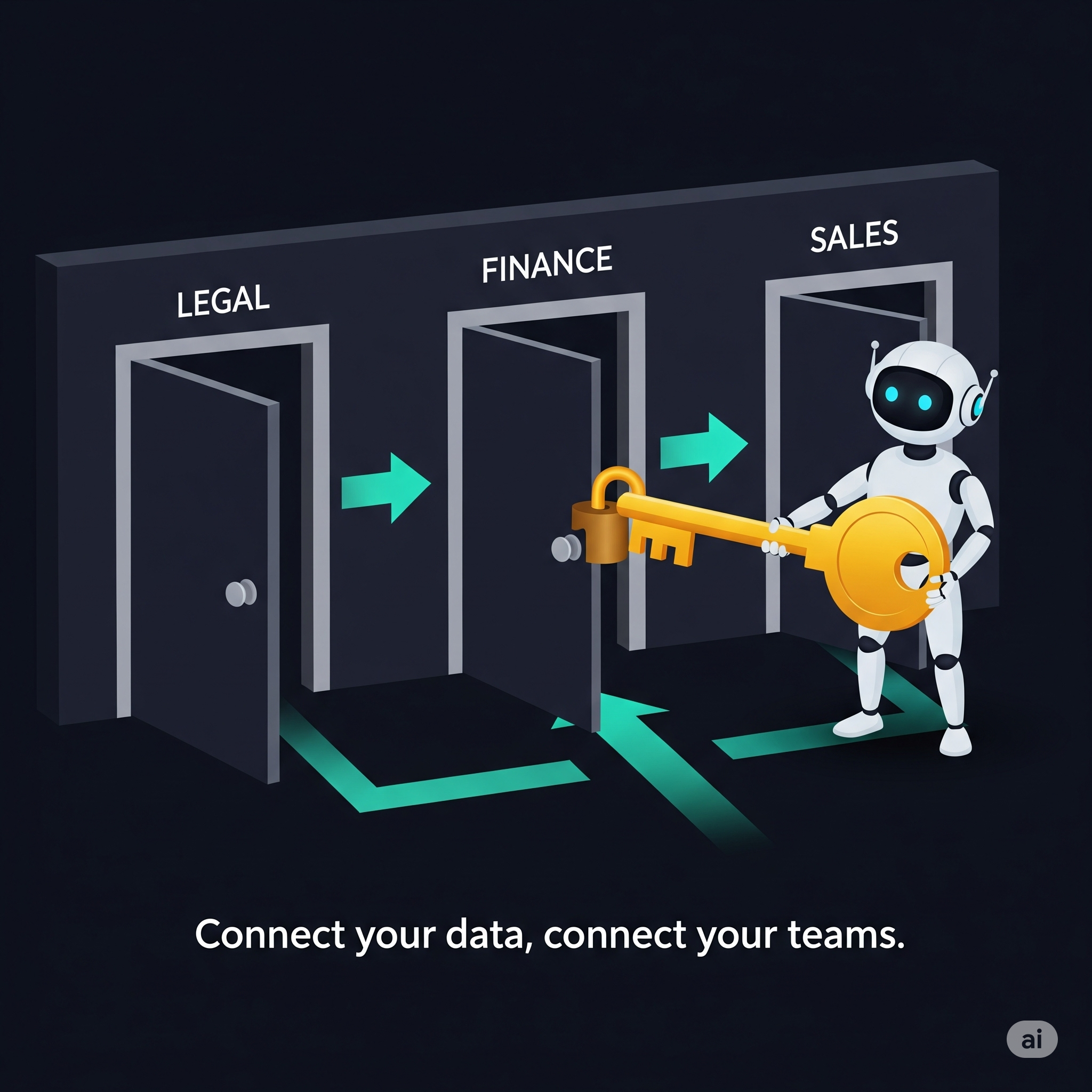
It’s Time to Stop Paying the Tax
This document problem isn’t a minor annoyance; it’s a major drain on your profits, your productivity, and your people. Continuing to throw more bodies at the problem is a losing game.
The good news is that the technology to solve this exists today. Smart tools can now read and understand documents just like a person can, but with the speed and accuracy of a machine. By using them, you can stop paying the hidden “document tax” and finally let your expensive software—and your talented people—do the work they were meant to do.


